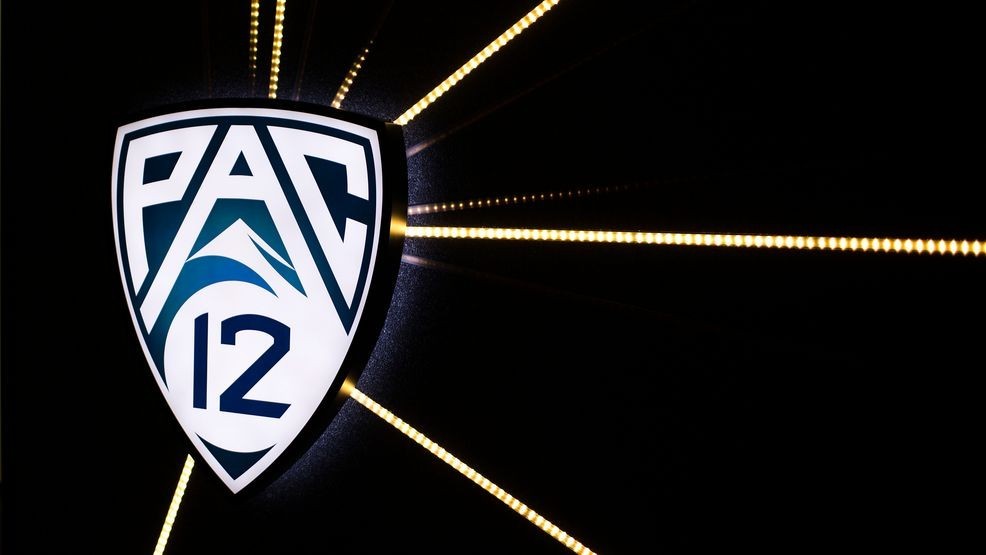The Pac-12’s Media Rights Dilemma: Secrecy and Struggles
In the realm of college athletics, good news is often shared with enthusiasm, while bad news tends to be swept under the rug. This dichotomy has surfaced in the recent actions of the Pac-12 Conference, which seems to be concealing its crucial financial developments under a cloak of secrecy.
The Non-Disclosure Strategy
A notable development has emerged from the Pac-12, as they have asked their athletic directors to sign non-disclosure agreements (NDAs) amidst the rollout of new media-rights deals. This decision raises eyebrows, especially when compared to other major conferences that openly share their financial details. Conference insider John Canzano’s report suggests that this move is not merely precautionary; it could be a response to the unfavorable nature of the conference’s recent media deals.
A Lack of Transparency
Unlike the SEC, Big Ten, ACC, and Big 12, which often broadcast their financial successes, the Pac-12 remains tight-lipped about the specifics of its agreements with CBS, The CW, and USA Sports. If the numbers were favorable, the expectation would be for the conference to announce them publicly. The silence, therefore, speaks volumes — it implies that the news may not be good at all.
Financial Speculation
Former Fox Sports President Bob Thompson weighed in on the matter, suggesting that the absence of leaks about financial terms likely indicates a mediocre deal. Based on his analysis, he suspects that annual revenues per school could range from $7 million to $10 million. He also notes that while the Pac-12 appears to have secured numerous linear network appearances, which could increase exposure, the underlying financial incentives remain questionable.
The Breakdown of Broadcasting
The upcoming Pac-12 football schedule, starting in 2026, will feature games available on linear television, including CBS, CBS Sports Network, The CW, and USA Sports. However, when we juxtapose these arrangements with what the Mountain West currently offers, the Pac-12’s slots appear lackluster at best. For instance, while the Mountain West might have fewer outlets, it boasts a more extensive selection of games on established networks, which may ultimately provide more visibility for its teams.
Comparisons with the Mountain West
In basketball, the disparity becomes even clearer. The Pac-12’s distribution includes a mere three games on CBS, alongside 35 on The CW and 50 on USA Sports. Conversely, the Mountain West has a somewhat competitive slate featuring three games on CBS, significantly more on CBS Sports Network, and appearances on FOX Sports. The question remains: why would the Pac-12, with aspirations of being a power conference, settle for what appears to be a lateral move in media rights?
The Strains of Realignment
The backdrop for this situation is the realignment chaos that has engulfed college athletics. The Pac-12’s attempts to raid other conferences for stronger programs have backfired. Reports suggest that the anticipated financial windfall from these moves has not materialized, further complicating the league’s position. The decision to invite schools from the Mountain West under the premise of increased revenue and visibility is now being scrutinized as those schools have incurred significant exit fees in this tumultuous transition.
Production Costs and New Ventures
Compounding the issues at hand, the Pac-12 is now tasked with producing all games on USA Sports, a decision that further strains its media rights revenue. Producing a single college football game can cost upwards of six figures, significantly reducing the returns from the new deal. This aspect adds another layer of complexity — the league’s financial strategy now hinges not just on broadcasting rights but also on the palpable costs of content creation.
A Dilemma of Value
While it is undeniable that the Pac-12 has bolstered its lineup with programs like Gonzaga and Boise State, the ultimate question lingers: is this arrangement yielding a better media-rights deal compared to the Mountain West? Formerly considered a minor conference, the Mountain West has been strategically capitalizing on its existing relationships with major broadcasting networks.
Athletic Directors’ Perspectives
Interestingly, the athletic directors of the outgoing Mountain West schools are publicly expressing optimism about their shift to the Pac-12, possibly to maintain the confidence of their constituents. Boise State’s athletic director, Jeramiah Dickey, echoed sentiments of satisfaction, claiming that their new deal would outshine their previous arrangement. Yet, one must ponder whether this optimism is rooted in reality or merely a narrative crafted to justify a complicated transition.
Conclusion
The Pac-12’s media rights negotiations encapsulate a broader narrative about the state of college athletics today. As the landscape continues to shift, the quest for financial stability amid ongoing realignment issues presents a challenging road ahead for the conference. Transparency remains an elusive goal, particularly when wrestling with the fundamental question: was this all worth it?



